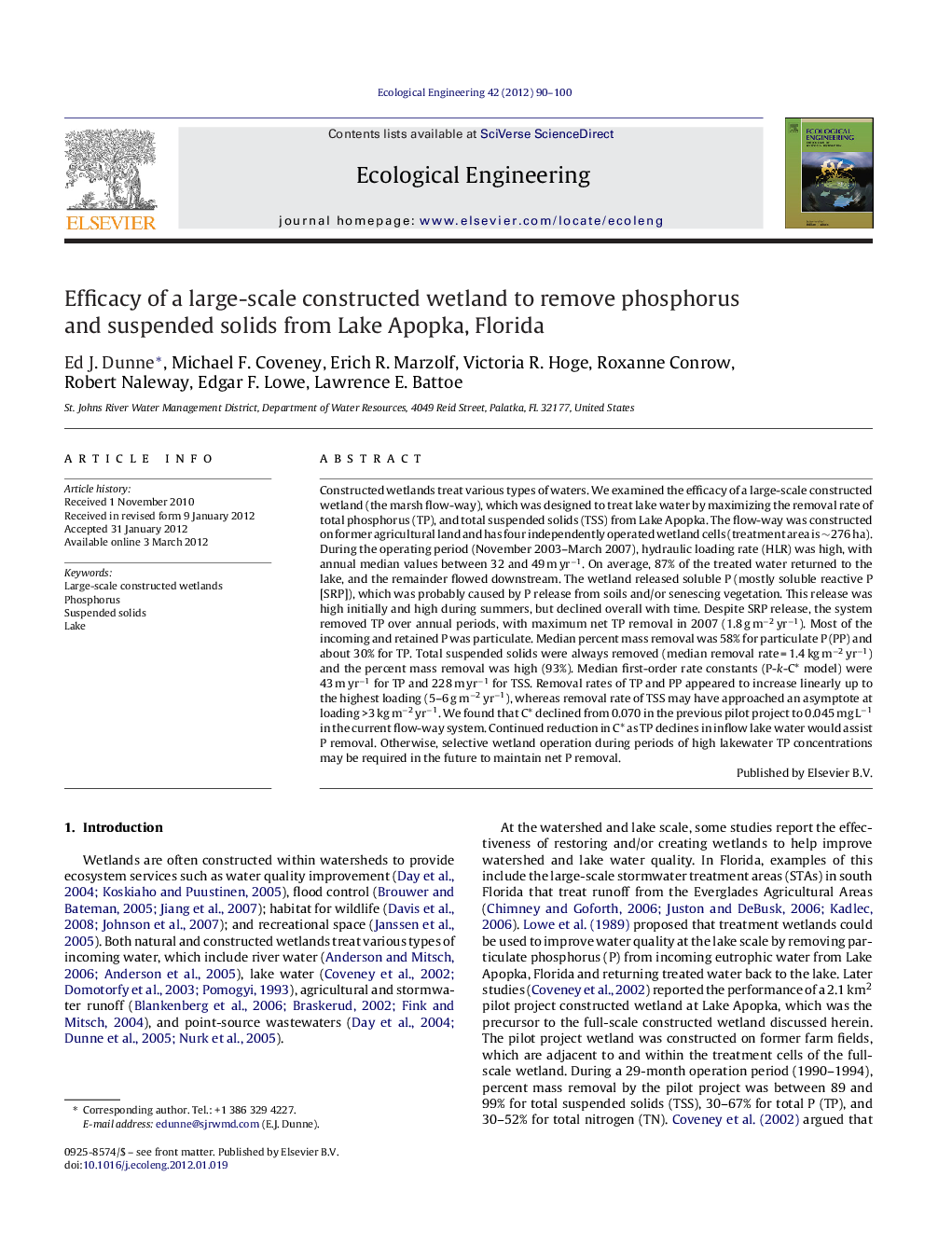| Article ID | Journal | Published Year | Pages | File Type |
|---|---|---|---|---|
| 6302754 | Ecological Engineering | 2012 | 11 Pages |
Abstract
Constructed wetlands treat various types of waters. We examined the efficacy of a large-scale constructed wetland (the marsh flow-way), which was designed to treat lake water by maximizing the removal rate of total phosphorus (TP), and total suspended solids (TSS) from Lake Apopka. The flow-way was constructed on former agricultural land and has four independently operated wetland cells (treatment area is â¼276 ha). During the operating period (November 2003-March 2007), hydraulic loading rate (HLR) was high, with annual median values between 32 and 49 m yrâ1. On average, 87% of the treated water returned to the lake, and the remainder flowed downstream. The wetland released soluble P (mostly soluble reactive P [SRP]), which was probably caused by P release from soils and/or senescing vegetation. This release was high initially and high during summers, but declined overall with time. Despite SRP release, the system removed TP over annual periods, with maximum net TP removal in 2007 (1.8 g mâ2 yrâ1). Most of the incoming and retained P was particulate. Median percent mass removal was 58% for particulate P (PP) and about 30% for TP. Total suspended solids were always removed (median removal rate = 1.4 kg mâ2 yrâ1) and the percent mass removal was high (93%). Median first-order rate constants (P-k-C* model) were 43 m yrâ1 for TP and 228 m yrâ1 for TSS. Removal rates of TP and PP appeared to increase linearly up to the highest loading (5-6 g mâ2 yrâ1), whereas removal rate of TSS may have approached an asymptote at loading >3 kg mâ2 yrâ1. We found that C* declined from 0.070 in the previous pilot project to 0.045 mg Lâ1 in the current flow-way system. Continued reduction in C* as TP declines in inflow lake water would assist P removal. Otherwise, selective wetland operation during periods of high lakewater TP concentrations may be required in the future to maintain net P removal.
Keywords
Related Topics
Life Sciences
Agricultural and Biological Sciences
Ecology, Evolution, Behavior and Systematics
Authors
Ed J. Dunne, Michael F. Coveney, Erich R. Marzolf, Victoria R. Hoge, Roxanne Conrow, Robert Naleway, Edgar F. Lowe, Lawrence E. Battoe,
